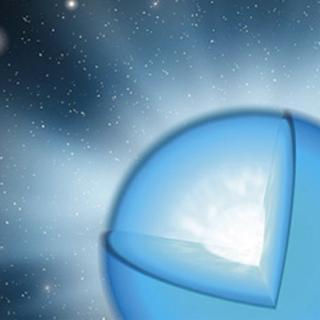Ramírez Alegría, S.; Herrero, A.; Rübke, K.; Marín-Franch, A.; García, M.; Borissova, J.
Referencia bibliográfica
Astronomy and Astrophysics, Volume 614, id.A116, 12 pp.
Fecha de publicación:
6
2018
Revista
Número de citas
0
Número de citas referidas
0
Descripción
Context. Recent near-infrared data have contributed to unveiling massive
and obscured stellar populations in both new and previously known
clusters in our Galaxy. These discoveries have lead us to view the Milky
Way as an active star-forming machine. Aims: We look for young
massive cluster candidates as over-densities of OB-type stars. The first
search, focused on the Galactic direction l = 38°, resulted in the
detection of two objects with a remarkable population of OB-type star
candidates. Methods: With a modified version of the
friends-of-friends algorithm AUTOPOP and using 2MASS and UKIDSS-GPS
near-infrared (J, H, and K) photometry for one of our cluster candidates
(named Masgomas-6) we selected 30 stars for multi-object and long-slit H
and K band spectroscopy. With the spectral classification and the
near-infrared photometric data, we derive individual distance,
extinction, and radial velocity. Results: Of the 30
spectroscopically observed stars, 20 are classified as massive stars,
including OB-types (dwarfs, giants and supergiants), two red
supergiants, two Wolf-Rayets (WR122-11 and the new WR122-16), and one
transitional object (the LBV candidate IRAS 18576+0341). The individual
distances and radial velocities do not agree with a single cluster,
indicating that we are observing two populations of massive stars in the
same line of sight: Masgomas-6a and Masgomas-6b. The first group of
massive stars, located at 3.9+0.4-0.3 kpc,
contains both Wolf-Rayets and most of the OB-dwarfs; the second group,
located at 9.6 ± 0.4 kpc, hosts the LBV candidate and an evolved
population of supergiants. We are able to identify massive stars at two
Galactic arms, but we cannot clearly identify whether these massive
stars form clusters or associations.
WHT spectra data (FITS) are only available at the CDS via anonymous ftp
to http://cdsarc.u-strasbg.fr
(ftp://130.79.128.5) or via http://cdsarc.u-strasbg.fr/viz-bin/qcat?J/A+A/614/A116
Proyectos relacionados

Propiedades Físicas y Evolución de Estrellas Masivas
Las estrellas masivas son objetos claves para la Astrofísica. Estas estrellas nacen con más de 8 masas solares, lo que las condena a morir como Supernovas. Durante su rápida evolución liberan, a través de fuertes vientos estelares, gran cantidad de material procesado en su núcleo y, en determinadas fases evolutivas, emiten gran cantidad de
Sergio
Simón Díaz